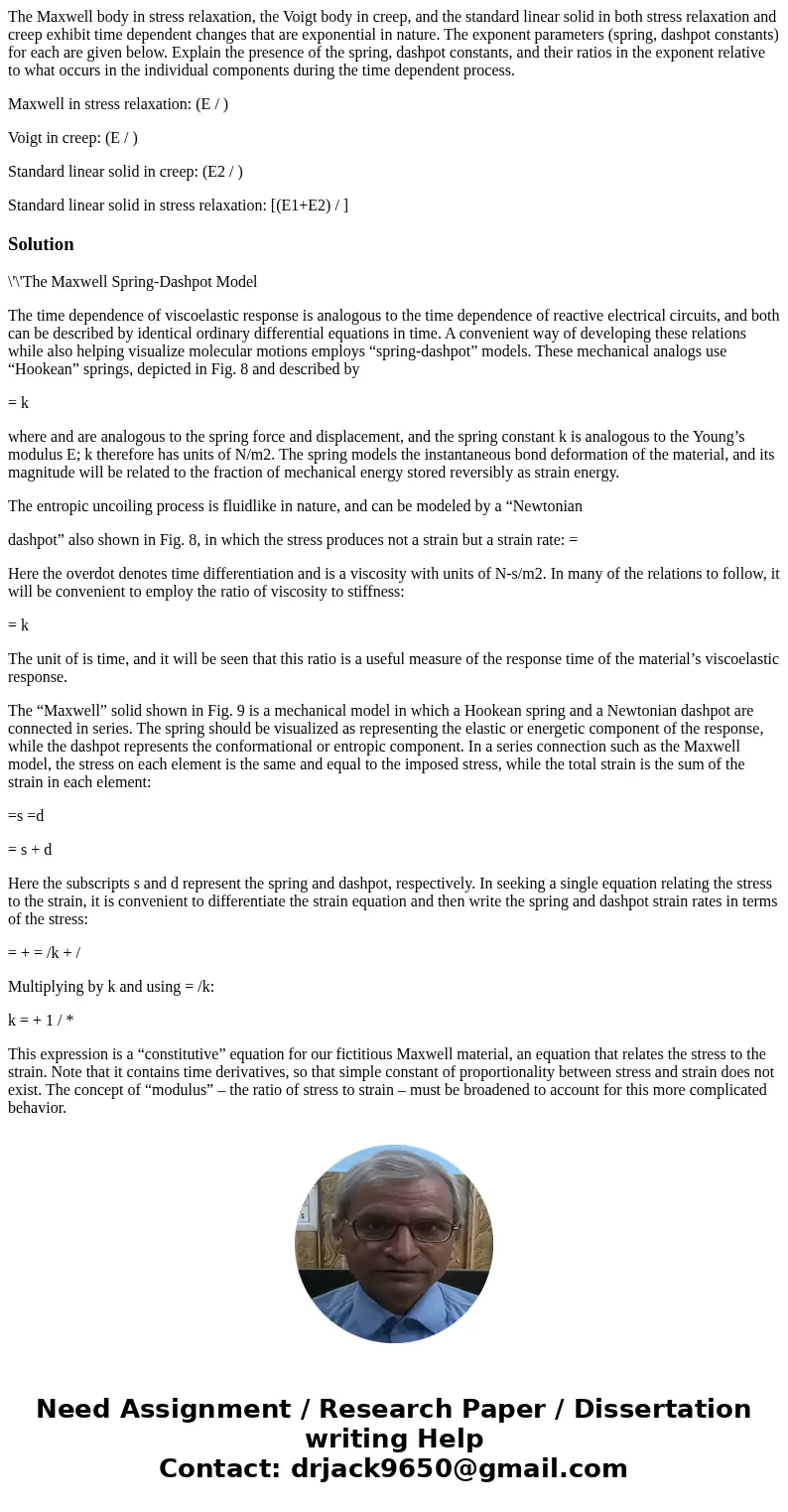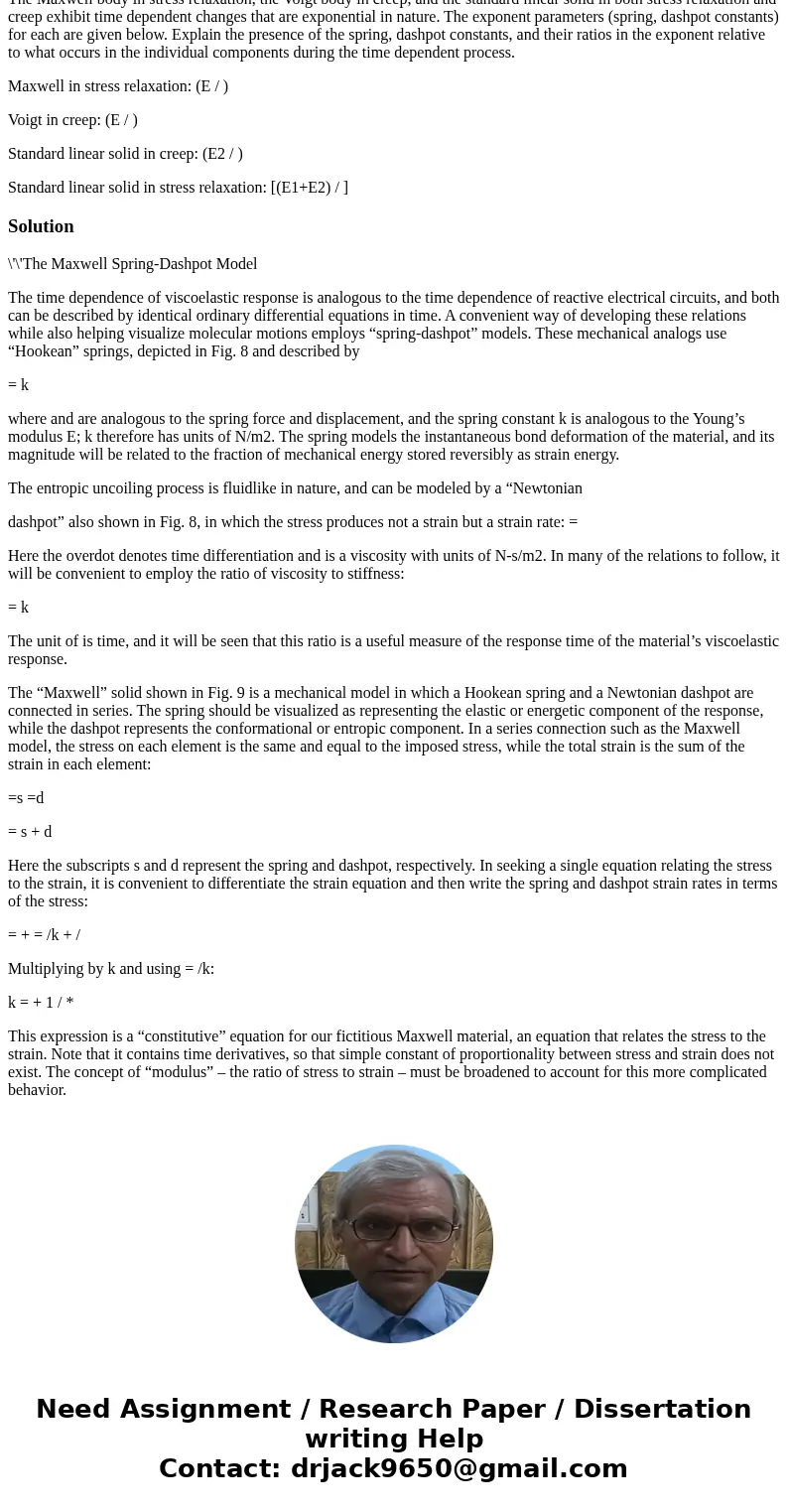The Maxwell body in stress relaxation the Voigt body in cree
The Maxwell body in stress relaxation, the Voigt body in creep, and the standard linear solid in both stress relaxation and creep exhibit time dependent changes that are exponential in nature. The exponent parameters (spring, dashpot constants) for each are given below. Explain the presence of the spring, dashpot constants, and their ratios in the exponent relative to what occurs in the individual components during the time dependent process.
Maxwell in stress relaxation: (E / )
Voigt in creep: (E / )
Standard linear solid in creep: (E2 / )
Standard linear solid in stress relaxation: [(E1+E2) / ]
Solution
\'\'The Maxwell Spring-Dashpot Model
The time dependence of viscoelastic response is analogous to the time dependence of reactive electrical circuits, and both can be described by identical ordinary differential equations in time. A convenient way of developing these relations while also helping visualize molecular motions employs “spring-dashpot” models. These mechanical analogs use “Hookean” springs, depicted in Fig. 8 and described by
= k
where and are analogous to the spring force and displacement, and the spring constant k is analogous to the Young’s modulus E; k therefore has units of N/m2. The spring models the instantaneous bond deformation of the material, and its magnitude will be related to the fraction of mechanical energy stored reversibly as strain energy.
The entropic uncoiling process is fluidlike in nature, and can be modeled by a “Newtonian
dashpot” also shown in Fig. 8, in which the stress produces not a strain but a strain rate: =
Here the overdot denotes time differentiation and is a viscosity with units of N-s/m2. In many of the relations to follow, it will be convenient to employ the ratio of viscosity to stiffness:
= k
The unit of is time, and it will be seen that this ratio is a useful measure of the response time of the material’s viscoelastic response.
The “Maxwell” solid shown in Fig. 9 is a mechanical model in which a Hookean spring and a Newtonian dashpot are connected in series. The spring should be visualized as representing the elastic or energetic component of the response, while the dashpot represents the conformational or entropic component. In a series connection such as the Maxwell model, the stress on each element is the same and equal to the imposed stress, while the total strain is the sum of the strain in each element:
=s =d
= s + d
Here the subscripts s and d represent the spring and dashpot, respectively. In seeking a single equation relating the stress to the strain, it is convenient to differentiate the strain equation and then write the spring and dashpot strain rates in terms of the stress:
= + = /k + /
Multiplying by k and using = /k:
k = + 1 / *
This expression is a “constitutive” equation for our fictitious Maxwell material, an equation that relates the stress to the strain. Note that it contains time derivatives, so that simple constant of proportionality between stress and strain does not exist. The concept of “modulus” – the ratio of stress to strain – must be broadened to account for this more complicated behavior.


 Homework Sourse
Homework Sourse